Winners of the NEW VISION OF THE LOFT 2 Competition
By Bustler Editors|
Friday, Aug 2, 2013

Related
Three winners have been selected for the New Vision of the Loft 2 competition, held by Polish roof window manufacturer FAKRO in cooperation with A10 New European Architecture magazine:
- First Place – "Live between Buildings" by Ole Robin Storjohann (DE, working in DK) and Mateusz Mastalski (PL, working in DK)
- Second Place – "Lock Loft" by Katarzyna Penar (PL, working in UK) and Wojciech Okrzesik (PL, working in UK)
- Third Place – "Spacecraftsmen" by Piotr Skrzycki (PL) and Dawid Szczepański (PL)
Entrants were challenged to create a new type of loft space through the inventive use of light and space. Other design requirements included highly energy-efficient technology and using at least 10 FAKRO windows or other products.
The projects had various contexts while they all addressed how windows can actually be used as a new architectural product, as well as how to create new space in the chosen contexts of the individual projects. The Jury had the most favor towards the projects that applied provocative and innovative concepts for the FAKRO windows, which the Jury believes could introduce possible ideas for future window types.
The Jury consisted of Indira van‘t Klooster (editor-in-chief A10 new European Architecture, Chair); Emmett Scanlon (founder of CAST Architecture, Irish correspondent for A10, advisor to the Arts Council of Ireland, Lecturer at University College Dublin); and Sabina Sujew (Master of Arts, Head of Exports Benelux at FAKRO).
The Jury's report about "Live between Buildings":
"The Jury appreciated the way the basic idea – creating small infill-dwellings in between existing buildings – has been worked out in extended research, thus providing models for various housing types in different cities. The plan can be realized entirely out of roof windows (with some technical adjustments) and offers an innovative idea for using empty spaces in urban fabric. The possibility of shapes is endless. The project was very beautifully drawn and communicated on a single sheet, the section describing both the architectural idea and the exciting occupation of the proposed building."
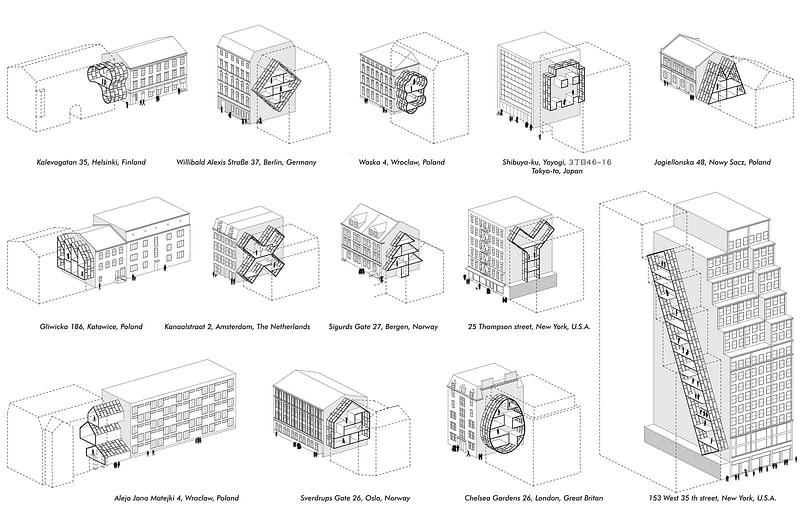
The project's statement and concepts, written by First-place winners Storjohann and Mastalski:
"The LIVE BETWEEN BUILDINGS project is a new way of living in the city. Infills between existing buildings that consist almost entirely of FAKRO window technology enable a life hyper-close to nature and city life, while on the same time exploiting the qualities of the already existing blind walls of the city."
Global presence:
As FAKRO is strengthening their global presence, the LIVE BETWEEN BUILDINGS way of living is also going global. We have pinpointed some possible building sites in cities around the world. Using the different roofwindows available from FAKRO, a wide variety of housing typologies are possible, thereby reacting to the context and culture of the specifc urban setting.
The future is dense
With minimal footprint and facade surface, but a maximum of living quality, the LIVE BETWEEN BUILDINGS project contributes to a denser, more sustainable city of the future."
Click here to see the entry in more detail.
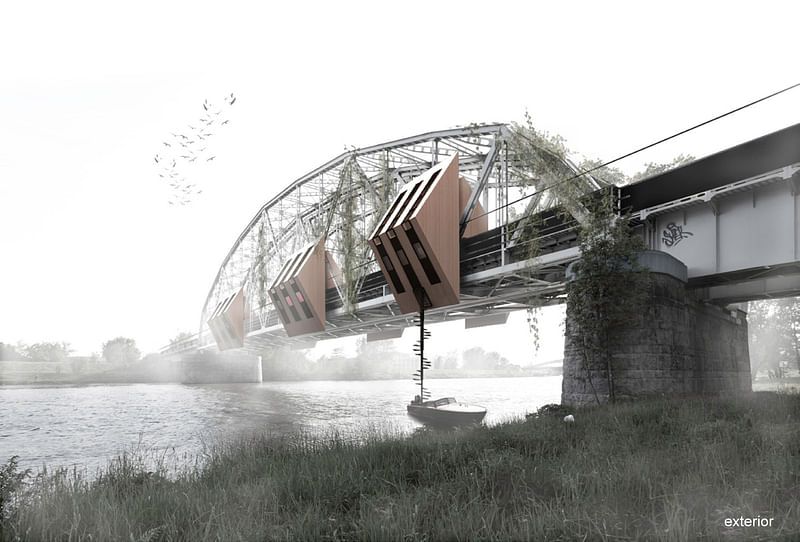
The Jury's report about "Lock Loft":
"This was a clever adaption of the historical typology of the bridge house (like Ponte Vecchio) as an add-on to an existing structure. The proposal is built on a derelict bridge near Krakow but could just as easily be realized on other bridges. The small housing type that LoftLock anticipates needs some further research on how to actually build it (and how to enter it comfortably), but could provide cheap (temporary?) housing in all sorts of situations and places. The drawings were soft and romantic but attempted a clear technical realization of the project. The jury admired the romantic narrative of the proposal."
Click here to see the entry in more detail.
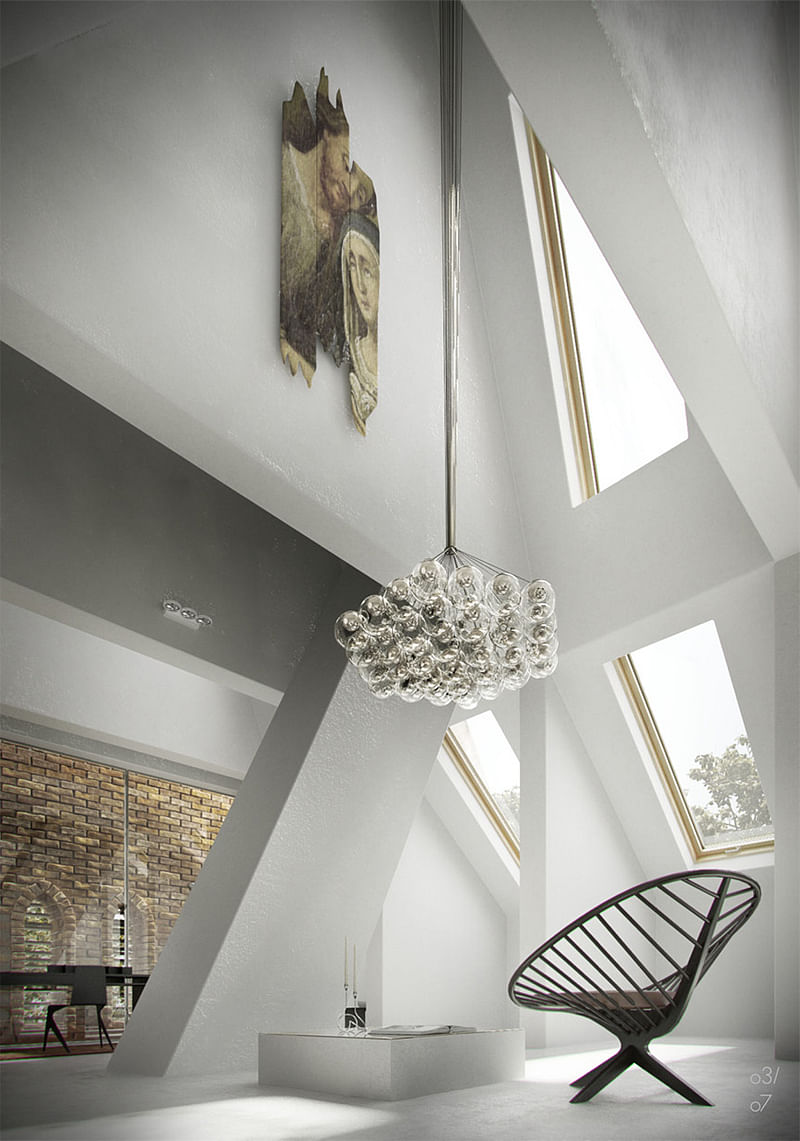
The Jury's report about "Spacecraftsmen":
"This adaption of a church into a ‘regular’ dwelling over time offers an intriguing vision of how to adapt churches to houses without losing its unique qualities and the same time adapting to the local context. Although the Jury was not entirely convinced that the project was credible, it was pleased to see the level of detail and the sensitivity of the architects towards light and space that churches have to offer. The interior renderings of the project were very accomplished, evoking intense, powerful interiors thatwere quite successful in communicating the possible tension of the project – establishing domestic life in a religious building."
Click here to see the entry in more detail.
Check out also the five projects which were awarded a Special Mention in the image gallery below.
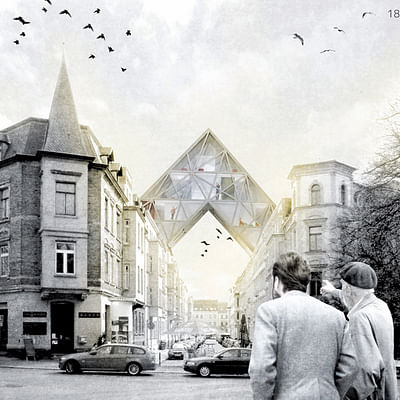
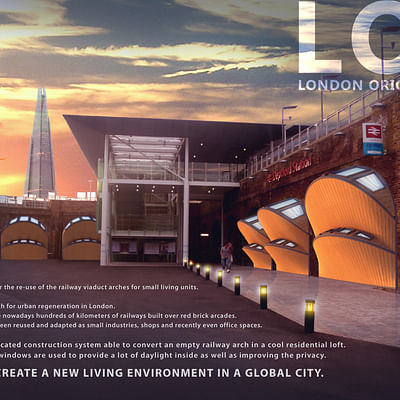
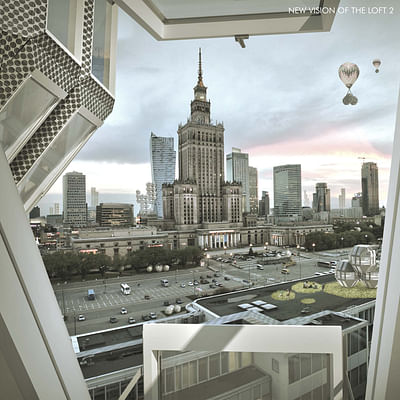
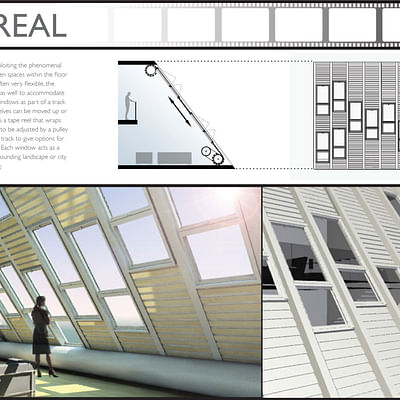


Share
0 Comments
Comment as :